Posts on Happily Homegrown contain affiliate links. When you make a purchase through an affiliate link, your price will be the same, but Happily Homegrown will receive a small commission. Thank you for your support!
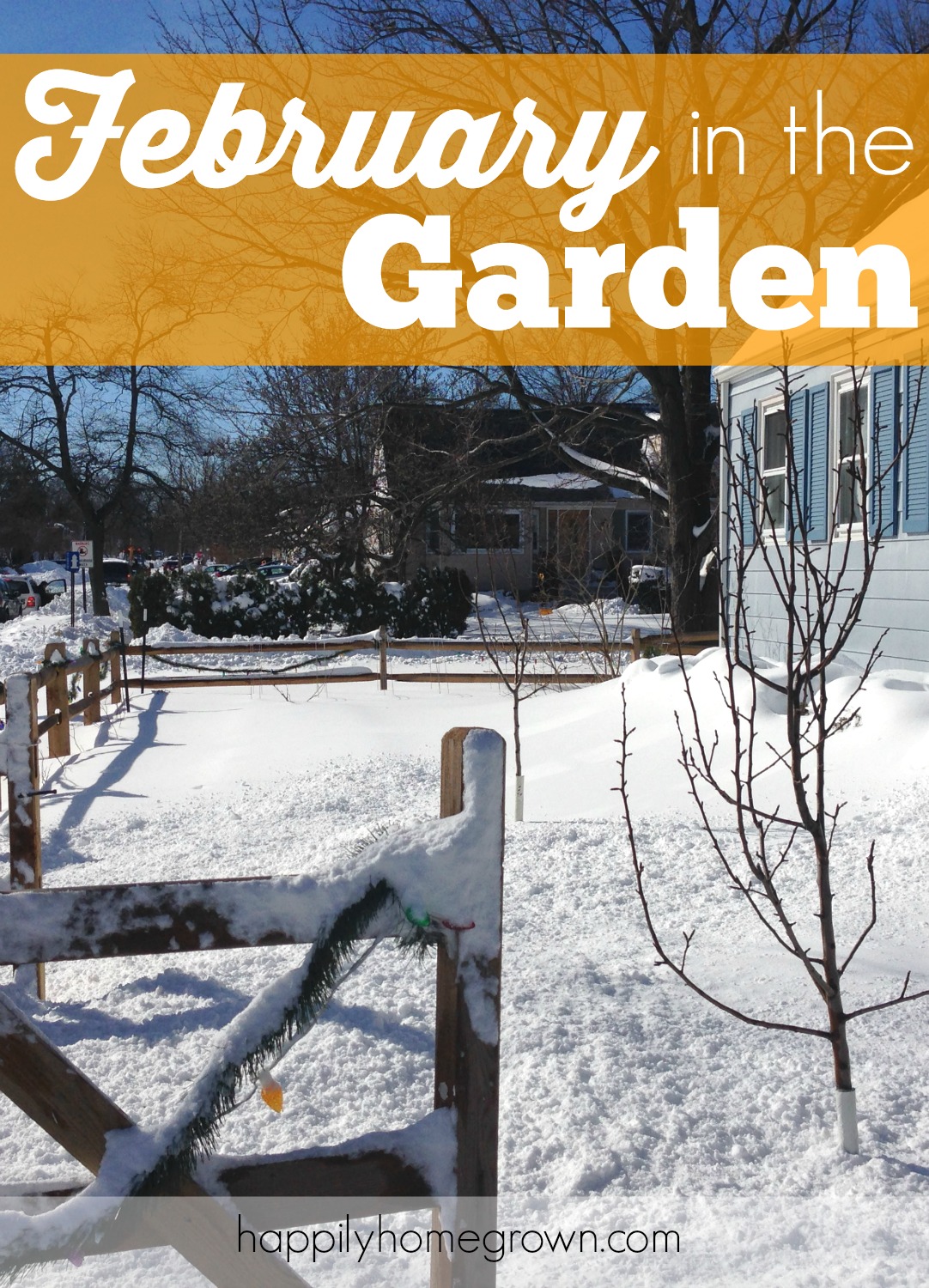
As you can tell from the above photo, February where I live means snow as it is still the middle of winter. Although Mother Nature has been a bit weird lately, it was 62°F on Wednesday, and now on Friday its snowing again, this is rather typical for Eastern PA – zone 7A. But, just because the ground is snow covered does not mean I am not thinking about gardening! February in the garden is just as important as every other month, if not more so, because it means planning for spring and what is to come! Having a clear plan and goals set is important in every aspect of your life, and gardening is no different.
February in the Garden
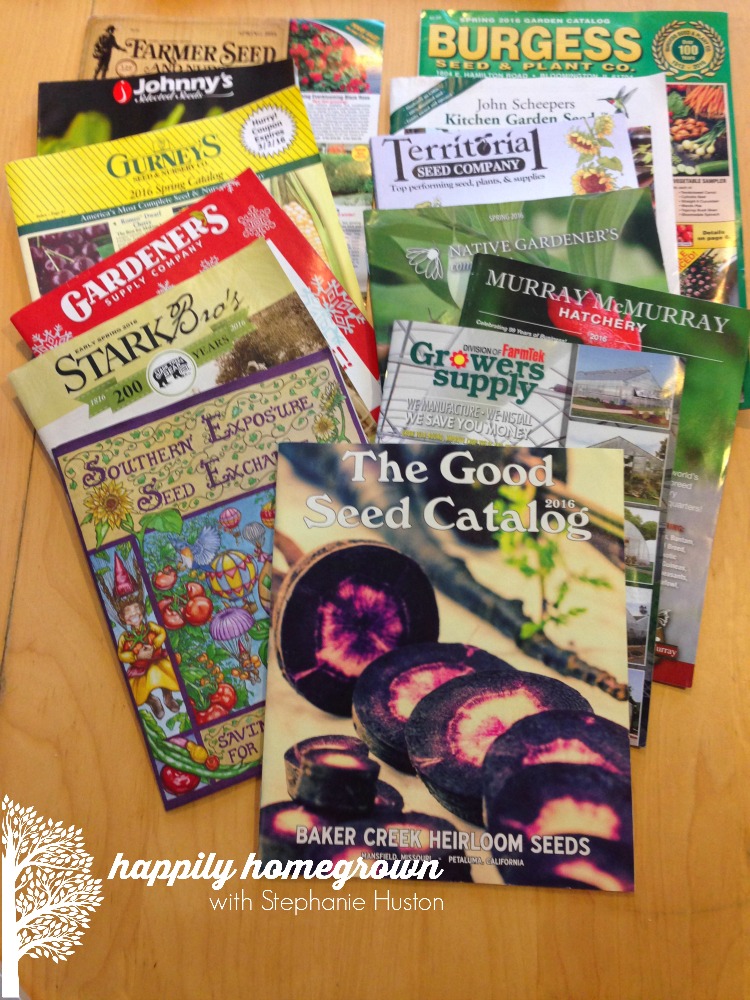
So what exactly am I doing in February? I’m sorting through a mountain of garden catalogs. I don’t order from each company each year, but I do get inspiration and tips from thumbing through the pages.
You can also begin visiting garden centers and the gardening departments at the big box stores. A few days ago, I visited our local Home Depot and was impressed that their entire gardening display is up! They had their huge seed display up, all of their seed starting supplies, spring flower bulbs, seed potatoes, onion sets, and even the bare root fruit plants! I spent an hour just looking at everything and dreaming of spring.

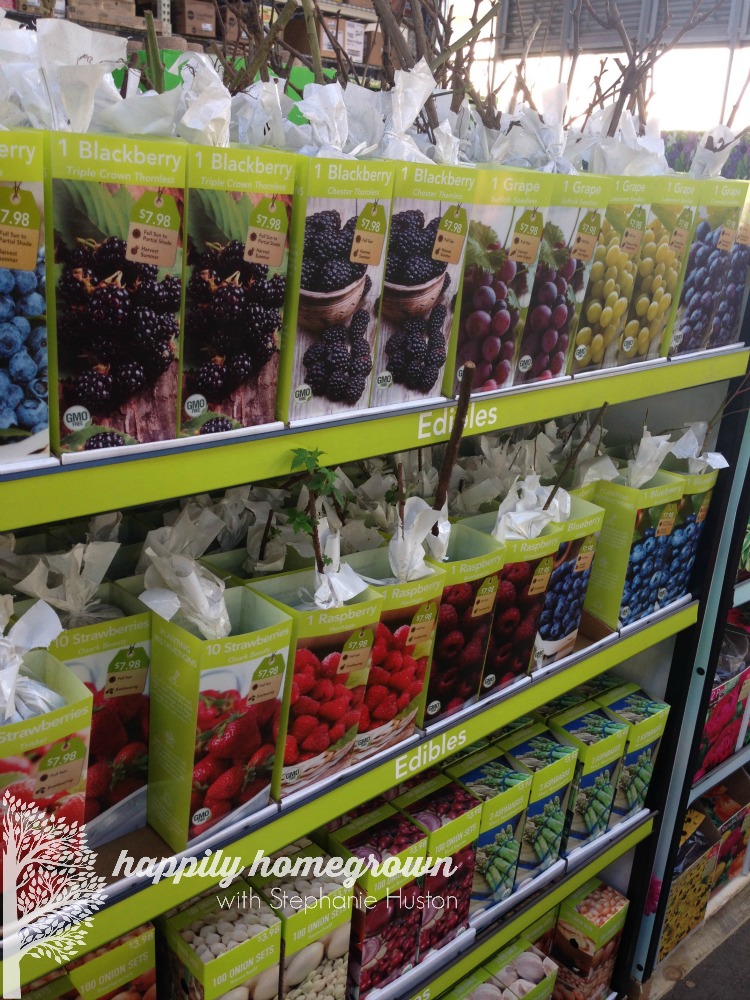
I have also begun adding compost to my existing garden beds. Coffee grounds, broken up egg shells, and even shrimp shells are all getting pulverized in my food processor and then spread over the garden beds that are out front. Since that bed is where the tomatoes will be this year, I want it to be nutrient dense to give my plants a great start.
With the recent deals on bananas at Aldi, I have been purchasing a lot for the freezer. I then remove all of the stickers from the peels, chop up the peels, and dry them out a little in my oven (200° for 4 hours). I then spread those pieces of banana peel in the garden as well. I had someone ask why I dry the peels out first instead of putting them in fresh, and its quite simple – I’m not turning my soil right now, and I don’t want my neighbors to think I’m throwing garbage across my front yard. By drying out the peels they are black and blend in a bit more. In the spring/summer the peels go directly into the compost pile and I think nothing of it.
Starting Seed
By mid-February you can even begin some of your seed indoors! That’s right, you can get your fingers in the dirt and start your plants now for spring and summer harvests. Here’s your list of what seeds you can start this month:
- broccoli
- cabbage
- cauliflower
- chili peppers
- eggplant
- kale
- lettuce
- onion
- peas
- peppers
- spinach
- tomatoes
You can also grow your herbs inside all year long, so start them up now too!
If your garden plan includes adding bare root fruit trees or berry bushes this year, you can plant them outside as soon as the ground is workable. If your ground is still frozen solid, just keep the roots damp and store your bare root trees in an unheated garage or shed. You don’t want them to get warm or they will come out of dormancy too soon.
Want to grow sweet potatoes this year? Now is a good time to begin your sweet potato slips. Place your sweet potato (I use one from last years garden, but you can purchase an organic sweet potato at the grocery store and start from there) in some water, and in a few days you will notice the eyes starting to sprout. Once you get a long piece of vine on one of your sweet potatoes, remove it, and place that piece in its own glass of water to establish some roots. Sweet potatoes don’t get planted outdoors until late May through June, so you have plenty of time to start your own sweet potato slips now instead of purchasing them from a nursery later.
So, there you have it – February in the Garden. Its time to think spring, start planning what you want to plant, and even starting your seeds indoors! Happy Gardening!


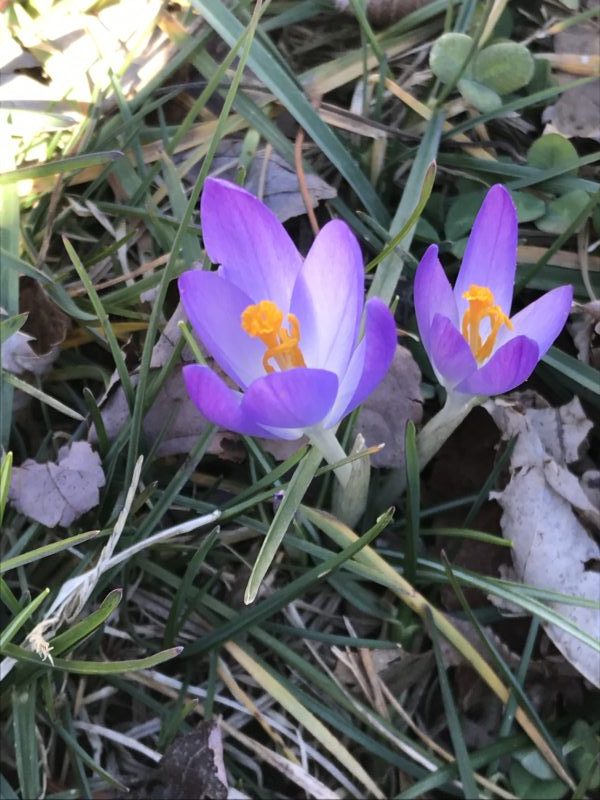
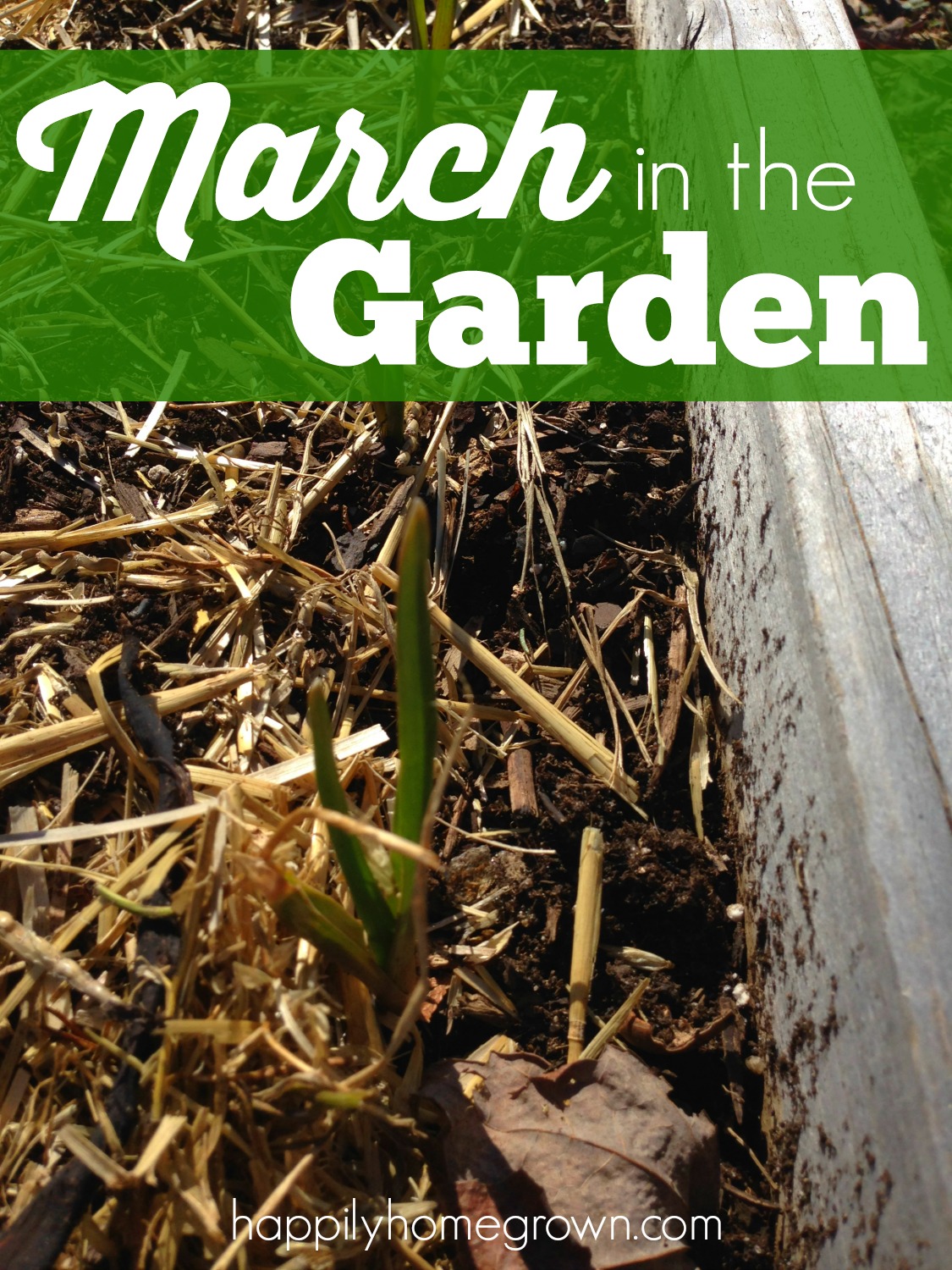
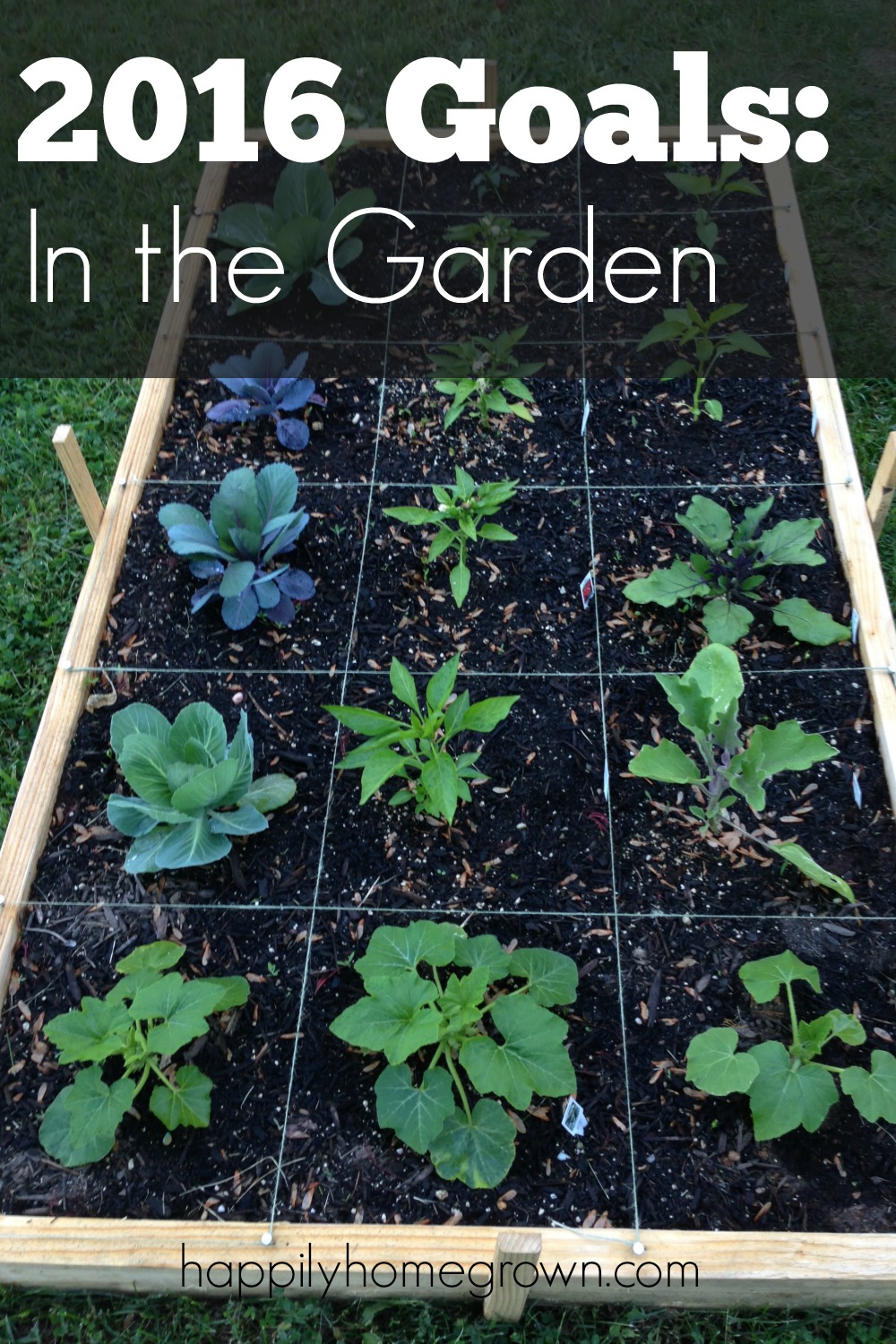
Such a great time of year when possibilities abound! Always my favorite part of winter– garden planning!
I am moving from Nevada to Washington state. I’ve been a die hard gardener in the Nevada desert and am looking forward to gardening in a more hospitable climate in Washington. I have a large area where I’m planning a chicken coop. (I can only have 3 chickens) and garden shed. I have plenty of room for several raised beds. My question(s) What do you make your raised beds out of? Did you use the SFG mix in them? I have high hopes of getting this all done as well as some raspberries, blueberries and maybe a couple of other fruit trees this spring/summer. Am I crazy? I live in an area that will require irrigation. It is in to my grass area but this area will have to be put in. I think it would be easier to get it all put in at once for the trees and raised beds. Is it too big an undertaking? Maybe if I don’t have it all in, like trees planted but water stubbed in. What do you think. Is it doable?
Hi Sheri! Sorry it has taken me a few days to come back and answer all of your questions. I wanted to make sure I had enough time to answer you properly.
My raised beds are made our of Hem-Fir. You can find all of the details on how my husband & children built them here –> http://happilyhomegrown.com/diy-raised-garden-beds/
I did not use a dedicated SFG mix in my beds. I did fill them with a combination of bagged garden soil, peat moss, and compost.
You are totally not crazy! I have a quarter acre property in the middle of the suburbs and we have 11 raised beds, plus 7 fruit trees (more to come), and about a dozen blueberry bushes. I tried to grow raspberries, but didn’t realize how much they spread. They send out runners underground, and they pop up nearby. Make sure you plant them exactly where you want them, and give them room to spread on their own. They also do very well in pots, so that is also an option if you want to contain the spreading.
Its a lot of work to do at once, and depending on when you are moving in you may want to hold back on some of the projects, but if you have the time, energy, and resources, I say anything is possible! Good luck with your move!